Sample processing of cultivated barley and wild relatives genetic resources
Contributors to this page: ICARDA, Syria (Ahmed Amri, Bilal Humeid, Kenneth Street, Natalya Rukhkyan, Jan Konopka, Siham Asaad, Adnan Omran and Fida Alô).
|
Contents: |
Cleaning is the removal of physical contamination from the plant materials after harvest, before they can be stored.
For cultivated barley:
|
|
|
|
|
|
|
|
|
|
|
|
- Harvest and thresh with a plot combine or stationary plot thresher, ensuring that the thresher and combine are clean before proceeding to the next accessions, to avoid any mixture between accessions. Barley seeds are hard and threshing does not cause any physical damage to the seeds, except for hull-less barley which should be threshed gently to avoid damaging the embryos.
- Remove the remaining awns with a di-awner machine.
- Clean with a wind blower separator (to separate the chaff, dust and other inert material from the samples, as well as light and empty seeds).
- Clean with a cylinder-type machine to remove broken seeds (caused by mechanical threshing), diseased seeds, soil particles and stones of the same size and weight of the grains.
- Hand cleaning is advisable as a final stage (to remove contaminants left after machine cleaning e.g. diseased grains).
For barley wild relatives:
- Harvest spikes only by hand (it is common practice to harvest before shattering).
- Remove the remaining awns with a di-awner machine.
- Clean with a wind blower separator (to separate the chaff, dust and other inert material from the samples, as well as light and empty seeds).
- Hand cleaning is advisable as a final stage (to remove contaminants left after machine cleaning e.g. diseased grains).
Visual inspection of seeds
This is a quality control process that must be carried out after harvesting the seeds.
- Spread the seeds on a flat, well-lit surface of contrasting colour. (This method reveals freely moving insects, eggs, mites, fungal fructifications, bacterial masses and infected plant debris. Examinations under or near ultraviolet light reveals infections of certain fungi and bacteria through emission of fluorescence).
- An illuminated table can be used if available.
- Examine dry seeds with the naked eye or under a microscope.
For insect and fungal damage
- Isolate the infested/infected samples (to prevent further spread of fungi or insects).
- Fumigation kills adult insects but does not kill eggs and fungi.
- Destroy samples when quarantine diseases and/or insects are found.
- Otherwise clean the seeds before storage using fumigation to eliminate insects, or wash samples using water and Clorox baths.
For mechanical damage and empty seeds
- Check incoming seed samples, using a light wind blower.
- Or manually clean shriveled and damaged seeds.
Special treatments
- Fumigate all harvested and incoming material (to eliminate insects).
Disposal of contaminated material
- Destroy samples contaminated with quarantine pests by burning (to prevent the spread of insects and diseases to other material and to ensure complete destruction of wasted material).
Inspection and certification
- Perform purity analysis of the seeds (following the ISTA standard method).
Methods
- Use a mechanical slow process by drying samples in dehumidifying rooms at 20-25oC and under relative humidity of 13-15% (to ensure embryo viability).
- The seed samples should be kept in paper or cotton bags on mesh racks during the drying period.
Drying time
- Minimum three weeks (the barley seed coat texture is not so hard thus the moisture is evaporates into ambient air).
Moisture content before drying
- 10-12% is a typical starting moisture content in dry areas. In other areas the range will be different (higher).
Moisture content for storage
- For both base and active collections moisture content for storage should be 5-7%.
Critical moisture content
- Should be 3-4% (for most of the crops it is recommended not to dry below 3% to avoid any adverse effects on the seed texture and viability).
- Recent research suggests 2-3% to extend the period of conservation.
Recording information during seed cleaning and drying
The following information should be recorded for each processing step:
- Accession Number (unique number in the collection).
- Reference to seed source (to trace the origin of the sample).
- Flags Y (Yes) and N (No) indicating if steps mentioned above have been completed (for checking).
- All packets, sacks and bags containing seed must be clearly labeled, identifying the accession with unique identifier(s).
- Durable labels should be affixed on, and inserted into, each seed bag.
- Data attributable to the accession sample should be printed on the label, including accession number, plot number, regeneration year and location, taxonomy and accession name.
- Remarks.
Determination of seed moisture content
Methods
- High constant temperature oven-drying (following ISTA 2005 methods, that are accurate and acceptable).
Sampling frequency
- Randomly.
Sample size
- Take two random samples of 4.0-5.0 g each and grind them separately.
- Take 1.0-2.0 g from each sample as two independent replicates.
Grinding
- Fine grinding is required by using adjustable mechanical grinder (to promote uniform and complete drying and to prevent errors in moisture content determination through water loss or absorption during the process).
Oven drying temperature
- 175oC for 90 minutes (following the ISTA rules).
Others
- Use analytical balance (to assure precision).
- Keep the dried samples in moisture-proof containers (desiccators) to cool down before weighing (to avoid changes in moisture content).
Recording information during determination of seed moisture content
The following information should be recorded for each step:
- Accession Number (unique number of sample in the collection).
- Net fresh weight in grams (g).
- Drying temperature.
- Time and date.
- Net dry weight in grams (g).
- Moisture content (%).
References and further reading
ISTA. 2005. International Rules for Seed Testing. Edition 2005. International Seed Testing Association, Bassersdorf, Switzerland.
Comments
- No comments found





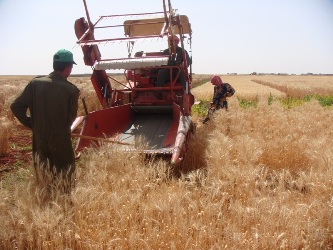
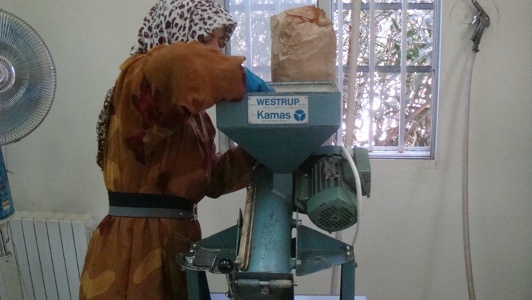
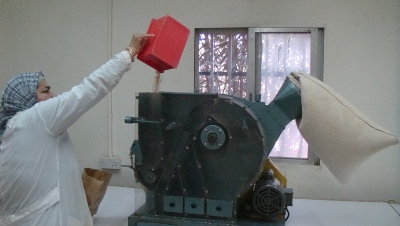

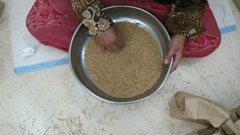
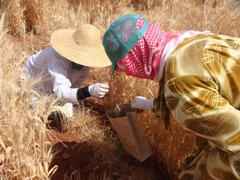
Leave your comments
Post comment as a guest